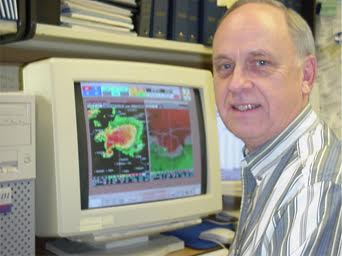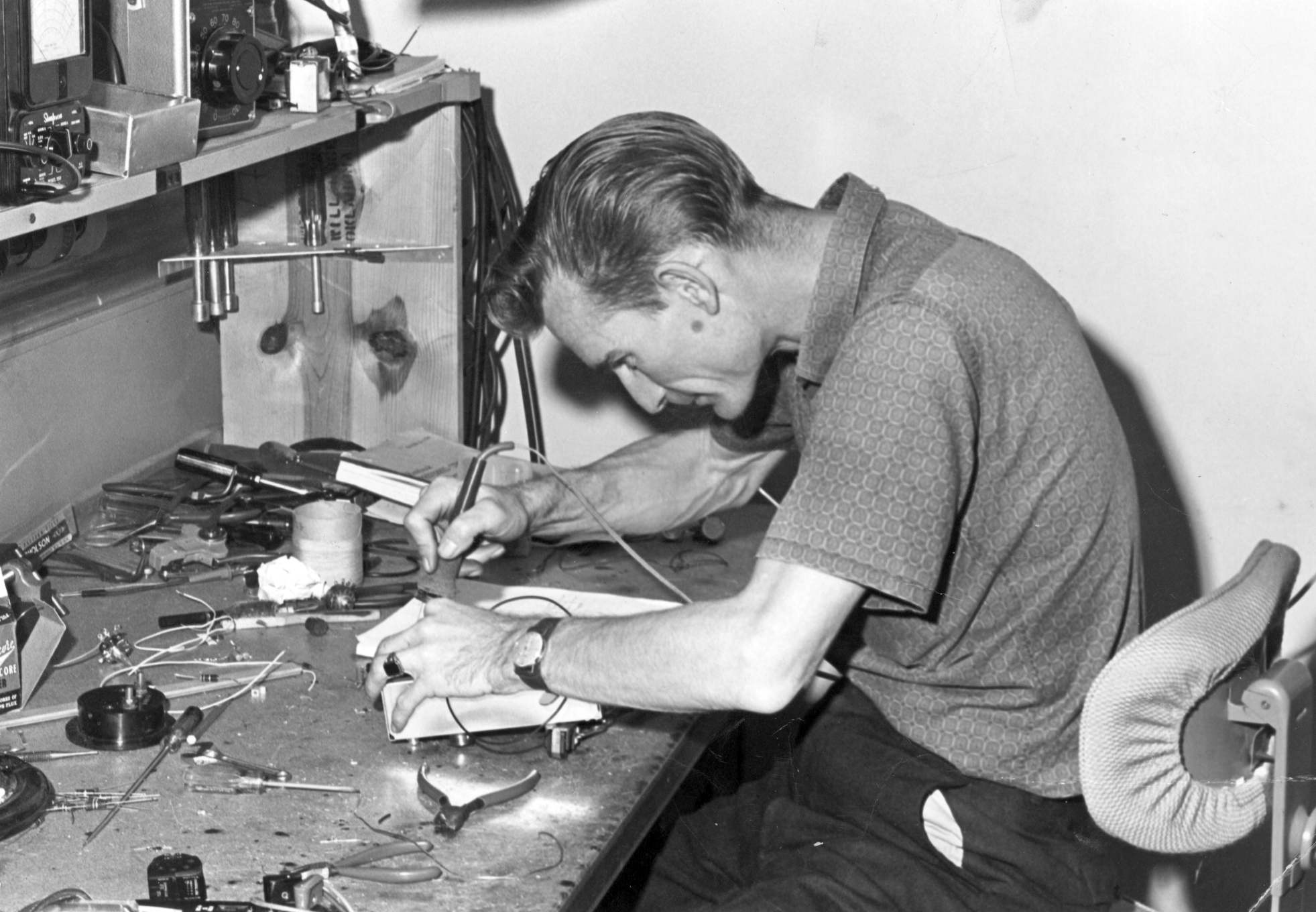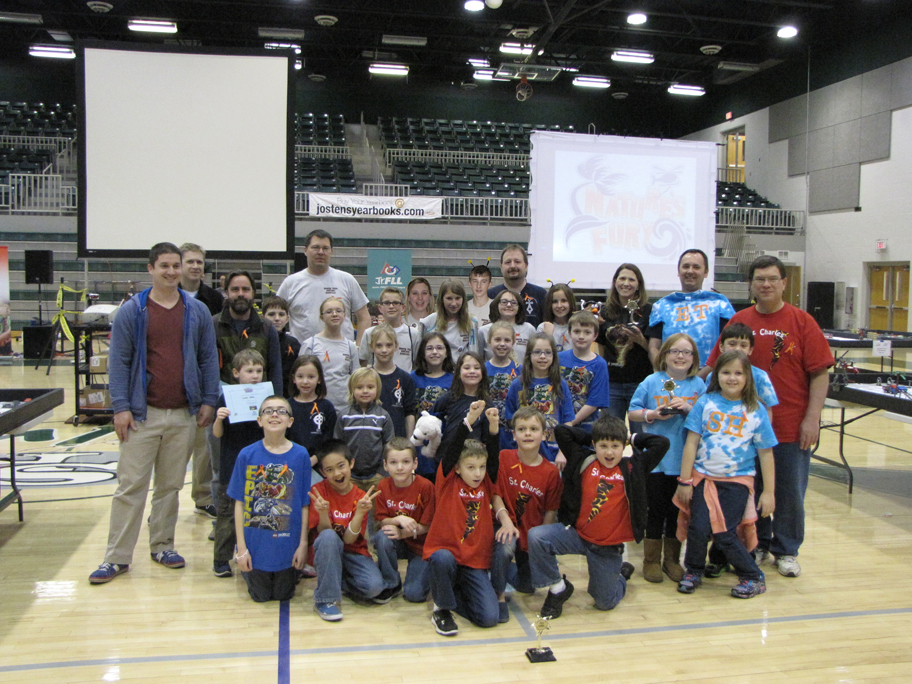
J.T. Dooley, December 12, 1932 – August 27, 2014
J. T. Dooley was one of the early staff members of the NOAA National Severe Storms Lab. In 1963, while working for the Weather Bureau’s National Severe Storms Project in Kansas City, Missouri, Dooley transferred to Oklahoma City to continue work in severe storm detection and identification. He soon became part of the research team at the newly formed NSSL in Norman, and made significant contributions to NSSL radar research until his retirement from federal service in 1988.
Remarks from Don Burgess, retired NSSL research meteorologist: “When I was a young NSSL employee — 1970 and beyond — J. T. was a more senior staff member. I remember J.T. being associated with (if not in charge of) operation of the WSR-57 digital radar…our backbone research radar as the Norman Doppler was being developed. I have memories of J.T. managing radar data quality and archiving, as well as Radar Room access. He and other early staff set the stage for and helped instill important practices in those of us who went ahead to be involved in Doppler radar development.”
Remarks from Ken Wilk, retired Chief of NSSL Operations: “Dooley’s first task was to calibrate WSR-57 radar to make high-quality quantitative precipitation estimates, quantify the severity of storms, and work with hail identification. The WSR-57 radar receiver was inside the radome along with the transmitter. Dooley discovered the temperature varied up to 70 degrees F inside the radome, which affected the stability of the Sensitivity Time Control. Fixing this involved changing the receiver part, stabilizing it with resistors that were not temperature sensitive, and ordering new amplifiers.”
Dooley also helped calibrate the pulse integrator that allowed NSSL to contour the data and perfect the display of multi-level displays of reflectivity at the same time. He then transferred to computer processing and developed software to aid in daily calibration, and helped develop severe storm tracking algorithms using a cross-correlation technique from one scan to another to determine cell motion. This technique, however, did not account for cells with different storm motion so he and others then developed a technique using the centroid of the individual cells.
Dooley contributed to the development of the auto-covariance estimator, known as the Pulse Pair Processor (PPP), by providing programming assistance to Dale Sirmans to evaluate performance and accuracy of the system. The PPP was used to provide estimates of mean Doppler radar velocities. The PPP was also the only one in the weather radar research community that also provided quantitative estimates of spectrum width, used to estimate subscale shear and turbulence.
For several years, NSSL operated the tallest meteorologically instrumented tower in the world on the Channel 4 tower in Oklahoma City. Dooley helped calibrate the instruments on the tower.
Dooley’s contributions to the Laboratory, according to the 1977 NSSL Annual Report, include:
- Establishment of the NSSL subsynoptic scale network;
- Management of NSSL’s mesonet – work data acquisition, processing, and archiving program from 1970 through 1974;
- Evaluation of the weather detection capabilities of the ASR and ARSR-1D Air Traffic Control radars of the FAA;
- Development of a computer program for the evaluation of the NSSL Doppler’s hardwired radial velocity and width estimators, namely, the Pulse Pair Processors;
- Development of certain operational and quality control procedures used in collection of WSR-57 digital and photographic data.
Educational Background
Mathematics, University of Missouri, Kansas City, 1962
Meteorology, Pennsylvania State University, 1960; University of Miami, Florida, 1962
Publications and Reports
A study of the comparative frequency of severe weather occurrences within 200 nmi radius of five Midwestern cities. 11 pp., 1961.
Radar data acquisition techniques. ESSA Tech. Memo. NSSL-24, 122-130, 1965 (with C. Clark).
Weather detection by ARSR-1D, ASR-4, and WSR-57 radars: A comparative study. Tech. Memo. NSSL-1 , 33 pp. , 1 965 (with K. Wilk and E. Kessler).
Doppler study of the motion of clear air targets. Proceedings, 12th Weather Radar Conf., October, 293-299, 1966 (with R. Lhermitte).
Toward a quantitative radar echo climatology. Proceedings, 13th Weather Radar Conf. , August, 280-285, 1 968 (with E. Kessler and K. Gray).
Detection and presentation of severe thunderstorms by airborne and ground-based radars: A comparative study. Tech. Memo. NSSL-43, 56 pp., 1969 (with J. Carter and K. Wilk).
The NSSL surface network and observations of hazardous wind gusts. ERL Tech. Memo. NSSL-55, 19 pp., 1971 (with NSSL Operations Staff).
Objectives and accomplishments of the NSSL 1975 spring program, Part II, Radar Quality Control Program. NOAA Tech. Memo. ERL NSSL-78, 47 pp., 1976 (with other NSSL Staff).



